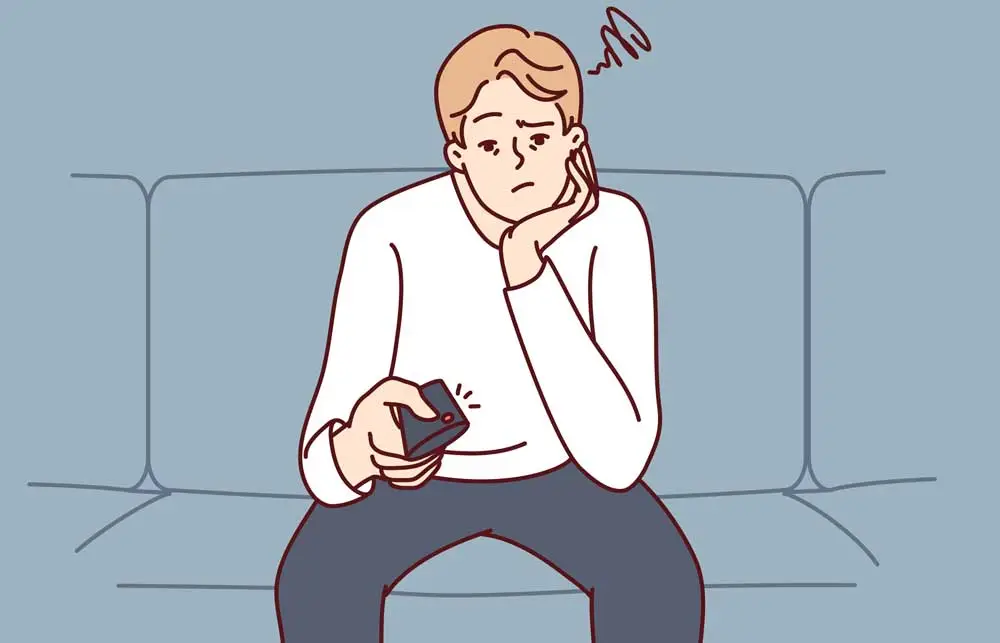Low-grade depression, also known as mild depression, is a less severe form of depression. It has many of the same symptoms, such as sadness, lack of enjoyment in activities, and low energy, but they tend to be less intense and occur over a longer period of time.
Because symptoms of low-grade depression are less severe and don’t interfere with a person’s ability to function in everyday life, many people don’t even realize they are depressed. However, just like major depression, it is still a condition that requires careful support and treatment.
In this article, we explore what low-grade depression looks like, including its symptoms, causes, diagnosis, and treatment options.
What is low-grade depression?
Low-grade depression, also known as persistent depressive disorder (PDD) or dysthymia, is a form of chronic depression that’s characterized by a persistent and long-lasting low mood. Unlike major depressive disorder (MDD), which is more intense and often episodic, low-grade depression involves a less severe but enduring form of sadness, hopelessness, and a lack of interest or pleasure in daily activities.
On the outside, people with low-grade depression may appear to be fine and not even realize they are experiencing depression. However, that’s often due to the chronic nature of the symptoms and the fact that they have become normalized.
Key features of low-grade depression include:
- Persistent symptoms: Low-grade depression lasts for an extended period of time, usually two years or longer. People tend to experience symptoms for the most of the day on most days of the week.
- Milder intensity: Sometimes called mild depression, symptoms of low-grade depression are generally less severe than those associated with major depressive disorder. Their impact on daily functioning might be less subtle but can still significantly affect a person’s wellbeing.
- Interference with daily life: Although people with low-grade depression are considered high-functioning, it can still interfere with various aspects of their life, such as work, relationships, and overall quality of life.
- Cyclical nature: About 75% of people with low-grade depression will also experience episodes of more severe depression. This is known as double depression.
Most of the time, low-grade depression has no clear cause. It could be a result of genetics or environmental stressors as well as a result of substance abuse, anxiety disorders or another mood disorder, or chronic illness.
If you think you’re experiencing low-level depression, know that you’re not alone. About 3.6% of the population will experience low-level depression at some point in their life. Just like major depression, low-grade depression is treatable. Early intervention is important as people with mild depression are at a higher risk of developing moderate or major depression later on.
Symptoms of low-grade depression
The signs and symptoms of low-grade depression are similar to major depressive disorder, but less intense and more persistent. Every individual will experience depression differently, and some people may exhibit a wide variety of symptoms while others will only experience a few.
Symptoms of mild depression, PDD, or low-grade depression include:
- Lack of enjoyment or pleasure in activities once enjoyed
- Persistent depressed mood
- Changes to appetite or weight
- Fatigue & tiredness
- Feelings of hopelessness, emptiness, worthlessness, or guilt
- Low energy
- Reduced motivation
- Negative thoughts
- Restlessness
- Isolating or withdrawing from others
- Thoughts of death or suicide
- Trouble sleeping or excessive sleeping
- Low self-esteem
- Difficulty concentrating, focusing, or making decisions
People with PDD experience one or more of these symptoms for the majority of the day, most days of the week, for at least two years. To understand more about your symptoms and have them looked at by one of our providers, take our depression self-assessment test.
Causes of mild depression
Like major depression, there are many possible causes for low-grade depression. These include genetic susceptibility, chemical imbalances, life stresses, and environmental circumstances. Some people with PDD might also have a chronic illness, substance abuse issues, or other mental health conditions that can contribute to their depression.
Let’s examine some of the factors that contribute to chronic low-grade depression:
- Genetics: Depressive disorders are known to have a genetic disposition. People who have family members with depression are more likely to experience it themselves.
- Chemical imbalances: While this is unlikely to be the main cause of depression, a potential factor of mild or severe depression is an imbalance in parts of the brain that regulate mood.
- Life stresses: Stressful life events, such as losing a job, going through a divorce or separation, or losing a loved one can all play a role in causing mild depressive symptoms.
- Environment: Sometimes, low-grade depression can be caused by external environmental factors. For example, the pandemic and subsequent lockdown may have led to an uptick in mild depression for some people.
How is low-grade depression diagnosed?
Low-grade depression is diagnosed by a healthcare or mental health professional. You can use a telehealth service to speak to a professional or visit an in-person clinic.
Like with other mood disorders, most cases of depression are diagnosed by examining a person’s symptoms. You may be asked questions about what you have been experiencing and for how long. These symptoms are matched against those laid out by the Diagnostic and Statistical Manual of Mental Disorders (DSM-5), a guidebook for diagnosing mental disorders like PDD or low-grade depression.
To be diagnosed with mild depression, you need to have experienced at least one of its symptoms (see above) for more than two years. The severity of your symptoms can help determine whether you have PDD or major depression.
In some cases, you might be asked to take a urine or blood test to rule out other medical conditions that can mimic depressive symptoms (like thyroid issues).
What’s the difference between low-grade and major depression?
The main differences between low-grade depression, or persistent depressive disorder, and major depression are the duration and severity of symptoms:
- Major depression: People with major depression experience more severe symptoms for at least two weeks.
- Low-grade depression: People with mild depression experience less intense symptoms for at least two years (one year for children or adolescents).
Although symptoms of PDD are milder than major depression, it can be just as disruptive to a person’s life and seeking treatment is just as important.
What are the different types of depression?
In this article, we’ve discussed low-grade depression (or PDD) and major depression. However, there are also other types of depression including:
- Peripartum & postpartum depression: Depression that occurs in women during pregnancy or after giving birth.
- Seasonal affective disorder: Depression that occurs with seasonal changes, usually in the winter months.
- Psychotic depression: Depression that includes symptoms like hallucinations, delusions, and paranoia.
- Treatment-resistant depression: This diagnosis is given when people have tried several depression treatments without success.
Treatments for low-grade depression
Treatments for persistent depressive disorder are largely the same as those used for major depression. These include antidepressant medications, psychotherapy, or TMS therapy (best for those who are resistant to other treatments).
Antidepressant medications
Mild depression can be treated with antidepressant medications. These include:
- Selective serotonin reuptake inhibitors (SSRIs), such as fluoxetine (i.e. Prozac), or
- Serotonin-norepinephrine reuptake inhibitors (SNRIs), like venlafaxine (i.e. Effexor).
Working with a licensed mental health professional is the best way to find the right medication for your symptoms. It can often take a bit of time to find the right drug and dosage for you, and what works for one person may not work for the other. Try to be patient and ensure that you’re taking your medication regularly and correctly to experience the best results. Psychotherapy
Also known as talk therapy, psychotherapy is another way to treat low-grade depression. Types of psychotherapy include:
- Behavioral therapy: This treatment focuses on identifying unhealthy behaviors and reducing or eliminating them while reinforcing positive behaviors.
- Cognitive behavioral therapy: This approach focuses on helping people change thoughts and beliefs that may be contributing to symptoms of depression.
- Humanistic therapy: Here, the focus is on a person’s self-growth. Different approaches include Gestalt therapy, client-centered therapy, and existential therapy.
How to cope with low-grade depression
As well as medication and therapy, there are other things you can do to relieve the symptoms of depression in your life. Simple lifestyle changes can be helpful in improving mood and making it easier to get through the day.
If you’d like to explore ways to cope with low-grade depression, we’ve outlined some suggestions below.
- Exercise: Research shows that exercise can help alleviate symptoms of depression. Try to choose a form of exercise you enjoy, whether it’s walking, swimming, dancing, or yoga. Remember that even a little bit of movement is better than nothing, and don’t be too hard on yourself if you skip some days.
- Avoid alcohol and substance use: While it can be tempting to reach for alcohol or illegal substances to improve your mood, understand that they can actually worsen your symptoms over time. It’s best to avoid these wherever possible.
- Healthy diet: One study found that following a Mediterranean-style diet significantly improved depressive symptoms. This diet focuses on eating whole grains, vegetables, fruit, legumes, dairy, nuts, fish, lean red meats, chicken, and eggs. Where possible, try to reduce sweets, fried foods, fast foods, sugary drinks, and processed meats, but let yourself indulge in yummy snacks from time-to-time.
- Stay busy: Try to actively seek out things that bring you enjoyment and fill your calendar with rewarding activities that uplift your mood. Some ideas include socializing, long walks, hobbies, time in nature, or visiting art museums.
- Nurture your sleep: Both too little and too much sleep can affect your mood, so try to focus on getting the right amount of sleep to keep you in a good mood throughout the day. You can cultivate good sleep hygiene by avoiding screens or using ‘night mode’ on your devices, making your bed comfortable, and avoiding caffeine or nicotine before bed time.
- Seek support: Don’t be afraid to cultivate a support system and reach out when you need some help or cheering up. Turn to positive friends or family who you trust and feel safe around, and let them know that you may need their support from time-to-time. A good support system can alleviate some of the stress caused by depression and help you feel less alone.
Seek help for low-grade depression
If you think you experience low-grade depression, know that it is a treatable mental health condition and support is available. Even if your symptoms aren’t significantly impacting your life, finding help now can prevent you from experiencing more severe forms of depression later down the line.
At BestMind Behavioral Health, we can help you find the right treatment for your symptoms. Whether you’re interested in prescription depression medication or TMS therapy for treatment-resistant depression, our therapists are ready to provide you with the support and care you need to feel better.
We offer telemedicine appointments as well as in-person bookings at our centers in Colorado and Oregon. Contact us now to be connected with a provider and start treating your low-grade depression.


